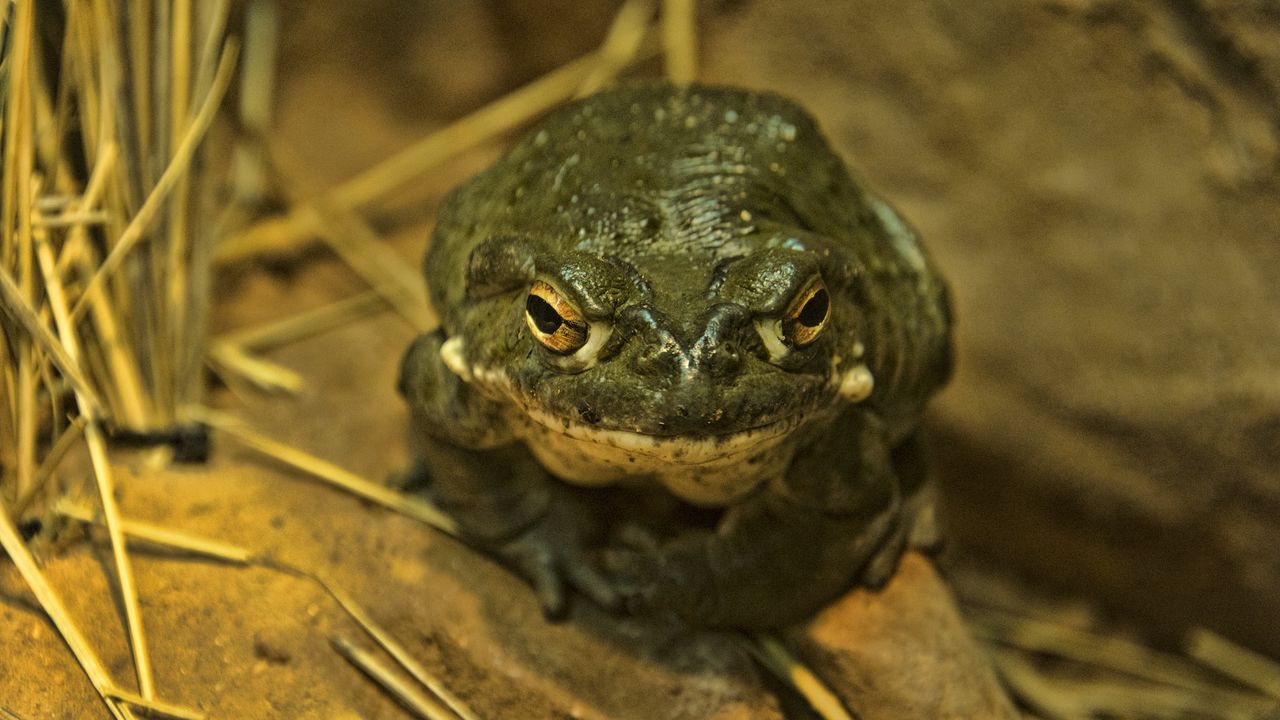In 2022, the U.S. National Park Service posted a blurry photo of a toad, snapped by a night-vision wildlife camera, accompanied by a tongue-in-cheek warning:
“As we say with most things you come across in a national park, whether it be a banana slug, unfamiliar mushroom, or a large toad with glowing eyes in the dead of night, please refrain from licking. Thank you.”
This message alludes to the urban legend that licking a toad can get you high. But do toads really have psychedelic properties?
### The Colorado River Toad and Its Potent Secretion
It is true that a certain toad found across the southwestern United States and northwestern Mexico secretes a potent psychoactive chemical on its skin. However, licking these toads is more likely to send you to the hospital than take you on a psychedelic trip.
The Colorado River toad (*Incilius alvarius*), also called the Sonoran Desert toad, has poison glands on its head that release the chemical 5-MeO-DMT.
“I think it’s one of the most potent psychedelics that there is,” said David E. Nichols, a professor emeritus of pharmacology at Purdue University and the first to create a synthetic analogue of 5-MeO-DMT.
5-MeO-DMT is a chemical that exerts its effects by binding to serotonin receptors in the brain. The drug lasts for about 15 to 30 minutes and can cause euphoria, a sense of nothingness, near-death-like experiences, and amnesia.
According to Nichols, the drug can even cause complete dissolution of a person’s sense of self, to the point where a user no longer remembers that they even used a drug.
### Why Licking Toads Won’t Get You High
However, 5-MeO-DMT doesn’t have any psychedelic effects when ingested orally. This means licking the chemical off of a toad wouldn’t get you high. It requires more complicated methods such as smoking.
What’s more, it can be very dangerous to lick these toads, experts warn.
“Licking a toad is a no-go,” Haley Dourron, a postdoctoral researcher at Linköping University in Sweden, told Live Science in an email. “Even pets that have licked the toad have ended up needing emergency medical care.”
That’s because Colorado River toads also secrete chemicals called cardiac glycosides. These compounds increase the strength of heart muscle contractions, and their effects on heart function can quickly become dangerous, leading to potentially life-threatening cardiac arrhythmias.
### Threats to Colorado River Toads
Yet the potential health risks haven’t stopped poachers from gathering Colorado River toads in an attempt to chemically process the 5-MeO-DMT on their skin for recreational use.
“Toads are being systematically removed by poachers to extract their secretions to be trafficked,” Robert Villa, a community outreach assistant at the University of Arizona, told Live Science in an email.
Colorado River toads are already being affected by changing rain patterns, habitat loss, fungal diseases, and pollution, Villa said, and poachers only add to the threat of their conservation.
### The Potential of 5-MeO-DMT
While obtaining 5-MeO-DMT from wild toads is unsafe and illegal, researchers are interested in the potential of synthetic 5-MeO-DMT, which is related to the psychedelic drug DMT.
Compared with more traditional psychedelics such as LSD or psilocybin, relatively little is known about 5-MeO-DMT and how it affects the brain.
“At this point, over 100 people have had their brains scanned during trips on typical psychedelics like LSD and psilocybin,” Dourron explained. “There are no published brain scanning studies of how 5-MeO-DMT works.”
Trip reports of 5-MeO-DMT are often quite distinct from subjective experiences with typical psychedelics. Rather than experiencing classic hallucinations such as fractal patterns, some 5-MeO-DMT users describe experiencing a total “white-out.” They might feel as if they’ve entered a “void” or experienced a sense of nothingness, Dourron explained.
The strange effects of the drug have led Dourron to investigate whether the effects of 5-MeO-DMT stem from similar brain pathways to those impaired in certain types of seizures.
Other researchers are exploring the potential of 5-MeO-DMT as an antidepressant. Early data show that the drug improves depressive symptoms within a day, with improvements lasting at least a week after treatment.
Compared with other psychedelic drugs being explored for their antidepressant properties, such as psilocybin, 5-MeO-DMT’s duration is much shorter, meaning treatment sessions could be completed more quickly.
“5-MeO-DMT is a very interesting substance, but ultimately, I think it likely plays by a different set of rules than other, more studied psychedelic substances,” Dourron said. “Only science will tell us just what this playbook is.”
https://www.livescience.com/animals/toads/can-you-actually-get-high-from-licking-a-toad
